
 |
| Participants stretch their bodies with the help of poles in the Beijing Olympic Forest Park, to warm up or recover before and after walking. (China Daily/Zou Hong) |
"It is boring and lonely jogging or playing tai chi by yourself," Hou said. "But you can chat with your friends while Nordic walking. You can work out and socialize at the same time."
After setting out, walkers in the forest park split as their walking speeds vary, but still stick with smaller groups. Hou and another eight walkers talked about news, TV programs, and soup recipes. Laughter bursts out occasionally in the group.
Hou is constantly greeting other walkers as they pass by. "I've gotten to know most people walking here. Having a nice talk with them is a great start of a day," she said. "Sometimes when I feel lazy, I still come to walk, because I would miss my friends who walk and they would ask about me."
The Institute of Sport Science also designed a pole exercise for Chinese walkers — stretching the body with the help of walking poles — which is unique to China.
Now the exercise has been introduced to all Nordic walking clubs in Beijing, for warming up and recovery before and after walking. In order to create more interactions between walkers, the exercise has some movements that need two people to cooperate, such as two people holding opposite ends of the poles and help each other stretch muscles in the arms and back.
The exercise is widely welcomed among Chinese walkers. As people usually do it with fast electronic music, some of walkers said it is also kind of "park dancing", only more athletic.
On a tour organized by the China Nordic Walking Association, Chinese walkers go to walk in Finland, where the sport was invented, twice a year. In 2012, 58 walkers hiked across the central park of Helsinki.
Xiao Gang, head of the association, said Nordic walking was introduced to China six years after it was created, but now it has been developing faster than it does in the Europe.
"Based on the larger population, the target group is bigger in China," he said. "Most importantly, the sense of healthy lifestyle is growing stronger in our country."
Xiao has also seen a business opportunity in the growing recreation. He said the price of a pair of poles range from 168 yuan ($27) to more than 900 yuan, which most urban residents could afford.
"Being healthy is more important than anything," said Hu Shuqin, a 58-year-old walker who spent 490 yuan on a pair of lightweight poles made of carbon fiber.
"I would spend much more on medication if I haven't been working out," she said. "Nordic walking makes my life healthier and happier."
At the beginning Hu said she was a little embarrassed walking with poles in public, but after a while she got completely comfortable.
"I tell jokes and even sing for people walking with me," she said. "I have tried jogging, swimming, playing tai chi after I retried, but none of them are as good as walking."
Chen Zhengyi, 81, walks five kilometers every day in past two years. "I thought I would be using walking poles in my 80s, now I am, but in an athletic way," he said. "I don't feel like 80 at all."
According to a report from the Institute of Sport Science, 90 percent of body muscle works while Nordic walking. It consumes 20 to 46 percent more calorie than regular walking with the same speed, time and length.
In a survey of more than 400 Chinese Nordic walkers in 2012, 70 percent said their knee pain has been eased after they adopted the exercise; 85 percent have less backache; 65 percent lost weight; 80 percent have lower level of blood fat.
The China Sports Association for Elderly People has been promoting Nordic walking since 2005. The Chinese Medical Doctor Association also recommends Nordic walking as one of the best ways to prevent cardiovascular diseases.
But the promotion does not always go well, said Xiao Gang. The sport began in Europe as off-season training of skiers in the Europe.
Since most Chinese people have no experience of skiing, walking with poles seems weird and embarrassed. It is also mostly adopted by elderly people, and Xiao said it would be helpful if the younger generations participate.
"But I believe it is getting more popular, as with something as simple as a pair of poles, people can benefit from the most regular physical activity," Xiao said. "The increasing number of walkers indicates the rising demand for healthy lifestyle in China, in the world's second-largest economy."




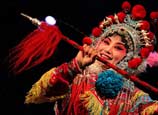
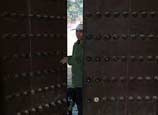
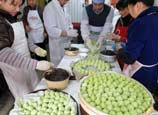
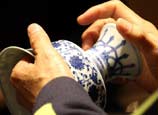
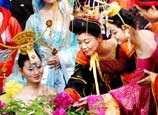

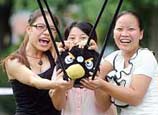






 Snails that are as fat as geese
Snails that are as fat as geese


![]()
